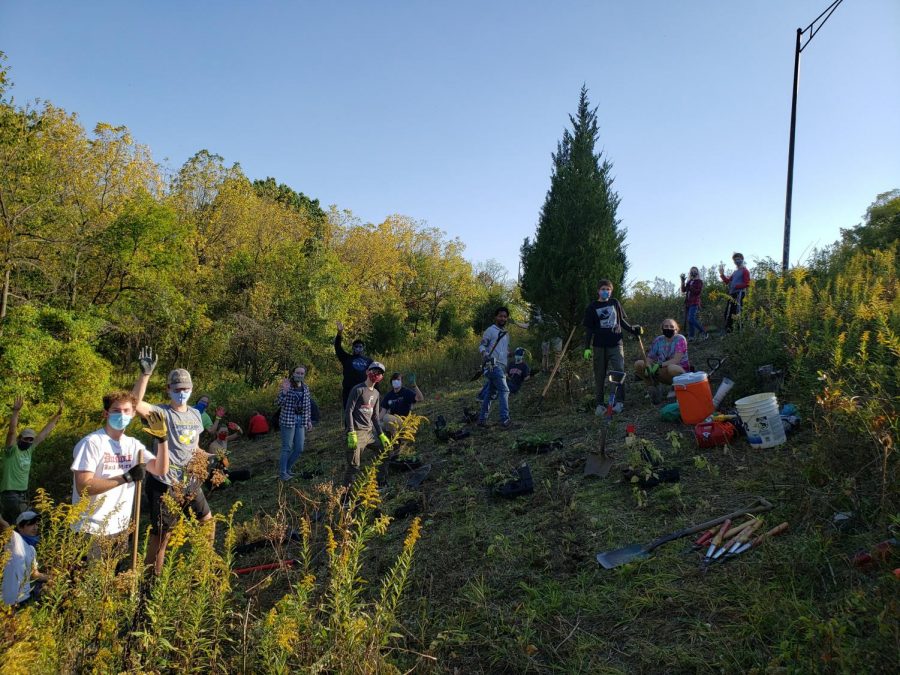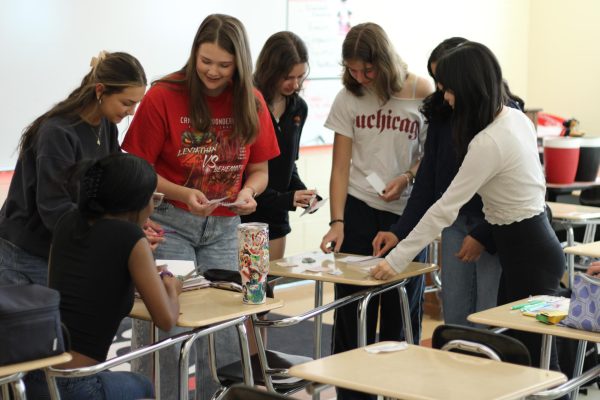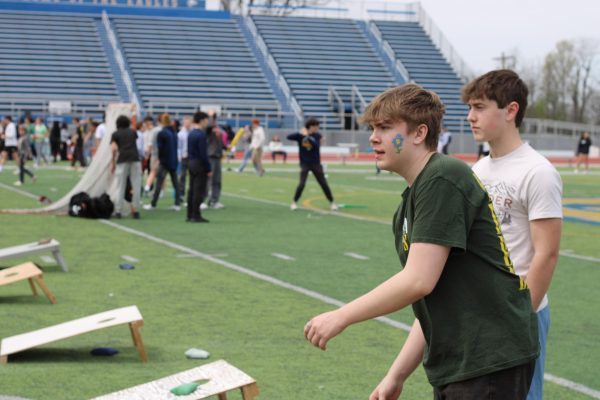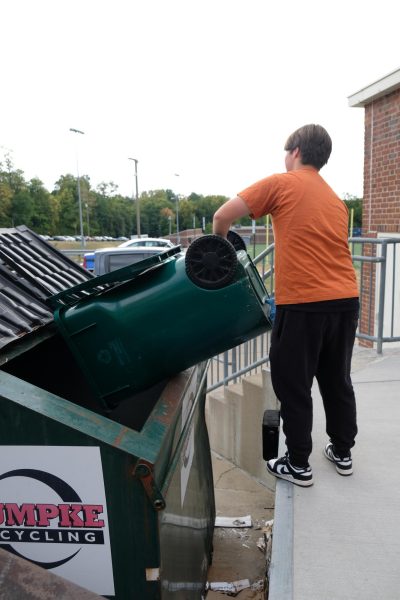Walnut Woods project welcomes students to park
After a hard day at work or school, members of the Evanston community or WHHS students may decide to take a hike through the Walnut Woods park. Upon entry at Sulsar you are greeted by a line of Redbud trees that were planted a few years ago and the tweets of the many birds in the woods. Following the end of the line of trees, the first trail begins.
The WHHS Bio eco-club, Green club, Cincinnati Parks, Civic Garden center, Evanston Community Council and volunteers from the community have all been working hard on the Walnut Woods project on and off since 2015. The 10-acre plot of land started as an area with invasive species and trash but is now getting closer and closer to being a park that WHHS students and members of the Evanston community can visit.
While it is still and always will be a work in progress, science teacher Alexandra Mondini, club members and volunteers are proud to welcome WHHS students to visit.
The Walnut Woods project started about five years ago with a small group of students who wanted to make the area into a park. They started by clearing out the invasive species and got the attention of Cincinnati Parks who owns the land.
Josie Backers, ‘18, and her mother pitched the proposal to them and Cincinnati Parks unanimously voted to adopt the plan. Soon the Civic Garden Center and Evanston Community Council joined the project. From there the project took off. They are currently working towards a plan which consists of three main goals.
The first goal is removing invasive species and trash and replacing them with native species to support wildlife. They want to make the land a habitat restoration area for conserving wildlife.
Before they started removing the trash and invasive species, Walnut Woods looked very different.
“You couldn’t even walk into it, because it was basically this impenetrable mass of honeysuckle wrapped with multiflora rose which is an invasive plant that has thorns, wrapped with porcelain vines which is another invasive plant,” Mondini said.
So far students and volunteers have removed trash, hacked away at invasive plants, built much of the trail system and planted over 700 trees. They planted 400 of those trees during a volunteer day this month. Removing invasive plants like honeysuckle is an ongoing battle they have to fight.
The second main goal outlined in the pitch is to make the space a walkable area for not only WHHS students but also the Evanston community.
“They [the Evanston community] don’t have access to a lot of green space, and that’s a real problem depending on where you live in our city,” Mondini said, “I think it’s important for people to have access to nature, no matter what race they are and no matter what their socioeconomic statuses are. We’re building trails in the area so if you live in the Evanston community and maybe you had a hard day at work and you want to go for a walk in the woods.”
Mondini’s third goal for the Walnut Woods project is to make a student land lab area for WHHS students and staff to use.
“As a science teacher I’m very excited about this because I eventually would like to create an ecology class where the whole class would be outdoor-based, and we’d be in the woods doing field studies learning about Ohio natural history and ecology concepts, but other science classes could use it too,” Mondini said.
The process hasn’t been easy, and they have faced setbacks including COVID-19 this year. Multiple volunteer days were canceled in the spring, leaving overgrown vines and lots of trash. The project is also facing budget cuts limiting things the club can ask for right now. However this school year Mondini was able to start having volunteer days again.
For a student, a typical volunteer day starts on a Saturday at 9 a.m. Volunteers pre-register through Cincinnati Parks. Students meet at Sulsar, and will see the Cincinnati purge truck and Civic urgency truck. Mondini starts with a quick meeting going over the goals for the day whether that’s planting trees, removing invasive species or a combination of things. For more information, join the Walnut Hills Bio Eco Club Schoology group with the access code MMW4-ZDV-5K62D.
“Anyone can get involved, and the more the merrier,” Mondini said.
Students who can’t make the volunteer days can still always come to enjoy the park. As you keep walking along the tree line there’s another mulched intercept of the trail. While walking you’ll see many big older trees well as newer trees that are just coming in. Wildlife is a big part of the woods, while you walk you’ll notice some squirrels and chipmunks. The beauty of the woods is thanks to the hard work put into the Walnut Woods Project.
Your donation will support the student journalists of Walnut Hills High School. Your contribution will allow us to purchase equipment, cover our annual website hosting, printing costs and offset competition and conferences fees for students.









